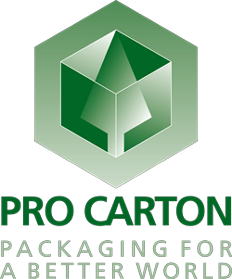Allan Boyle has spent 35 years in packaging, starting on the supplier side, where he was Product Development Manager for a large UK company. Since 1983, he has held various positions within the Nestlé Marketing Communications Group in the International Head Office in Vevey, Switzerland, and spent two years in Canada as Design Director.
Currently, he is Creative Services Manager, responsible for Packaging and Branding for the Worldwide Strategic Brand portfolio, Corporate Identity and Design, Internal Marketing Communication and Graphics Project Development. Training in Design and Point-of- Purchase material all over the world is also a major part of his team’s responsibility. Allan has degrees in Industrial Design and in Marketing.
Katrin Werth is Product Manager for BALEA, the premium private label of dm-drogeriemarkt, a German drugstore retail chain. After her graduation as a business economist from the University of Saarbrücken (D) in 1998, she worked as product manager in the adhesive industry, before joining dmdrogeriemarkt in April 2001.
Before starting her professional career, she worked as a freelancer involved in the planning, and co-ordination of consumer marketing projects commissioned by various companies.
Fiona Warn has worked for SiebertHead (UK) as a senior designer for eight years, specialising in branded packaging for various global clients. Prior to this she worked as a senior designer, for eight years, for the worldwide Michael Peters Group.
Pascal van Beek has been active as a packaging buyer throughout his career, which started at Mars in 1991, where he worked for a company called Masterfoods, producing sauces in glass jars (Uncle Ben’s, Dolmio and Suzi Wan). After 1.5 years as management trainee, he became a packaging buyer. Subsequently, he worked for Nestlé, where he was European Purchasing Manager printed packaging for their petfood division (Friskies, Gourmet, Felix, Winalot, Bonzo etc. etc.).
In March 1999, he joined Unilever Ice Cream and Frozen Foods Europe (ICFE). His team is responsible for all packaging buying for the factories in Europe incl. Poland, Hungary, Turkey and Israel.
Special advisors to the jury were Richard Dalgleish (Managing Director of Pro Carton), and Mona Kanzler (Pro Carton Nordica).
In taking over the Chairmanship of the jury this year, I confess to being apprehensive over the challenges – firstly about maintaining the highest standards set by the jury chaired by my predecessor Hans Dirken, and secondly about the intimidating quantity, quality and variety of the Competition submissions overall.
Once into the judging process, I made a number of “discoveries”, which I’d like to share with you.
The number of entries was up by 50% over 2002! The confectionery category, whose success relies heavily on impulse and gifting purchases, in fact created a major problem for the jury by offering such a richness of content, and so many potential winners. Regrettably, numbers don’t always help, because a couple of other categories did not match quality with quantity. It is not that they were in any sense “bad”. Rather they were lacking in imagination and differentiation, two essential characteristics to cut through the competitive clutter. In fact, looking at the number of really interesting packages from those categories in retail stores currently, it seemed to the jury that the variety of submissions was not really representative, which is a pity.
The enemy of sales growth is banality and predictability. Be relevant, but above all be daring and be different. These key success factors you will find in the choice of the overall and category winners
To reinforce an important point already made by Richard Dalgleish, a pack with a simple, powerful concept is preferable to one which is complex and difficult to decode by the consumer. We need to remind ourselves of the challenge that FMCG packages meet in retail. All the functional and communication elements need to be maximised and balanced. Material, construction, form, graphics and serviceability are vital to be present in a holistic way, so that the consumer feels that the product has been packaged “specially for them”, and the brand experience is thus enhanced. Above all, the consumer has “to get it”, and quickly. That is, the reason to buy must be clear.
The jury found some difficulty in visualising some “incomplete” packs. To help judging, the pack, including product should always be available. If this is not possible, a series of photographs showing the product in context is going to help understanding of the role of the pack, and thus increase the possibility of winning an award.
On a point of the Competition rules, it is a great pity if an otherwise excellent pack is not in compliance. This happened in this year’s competition and, of course, the entry was automatically excluded from the main competition. However, the Judges asked if a special award could be given to reflect excellence in a pack that fell outside the competition rules. The jury regards transparent fairness as a basic credo, so please help us in this respect.
Lastly, as I stated emphatically in Crete, packaging has indeed finally gained the respect of the media planners. Because of its unique characteristics and ability to guarantee a contact with the consumer, it is a medium worthy of investment within a marketing plan.
The question is this. Of all the packaging materials available to brand owners, is carton board seen as one of the preferred ones?
As is clear in the Competition, carton is highly creative functionally and communicatively. Some categories are in advance of others, but all have the same potential.
Let the winners inspire us all to do more, go further. For those who didn’t win, keep trying! Let’s have another 50% increase in entries in 2004. The jury would love the challenge!
Allan Boyle
Vevey, September 2003



